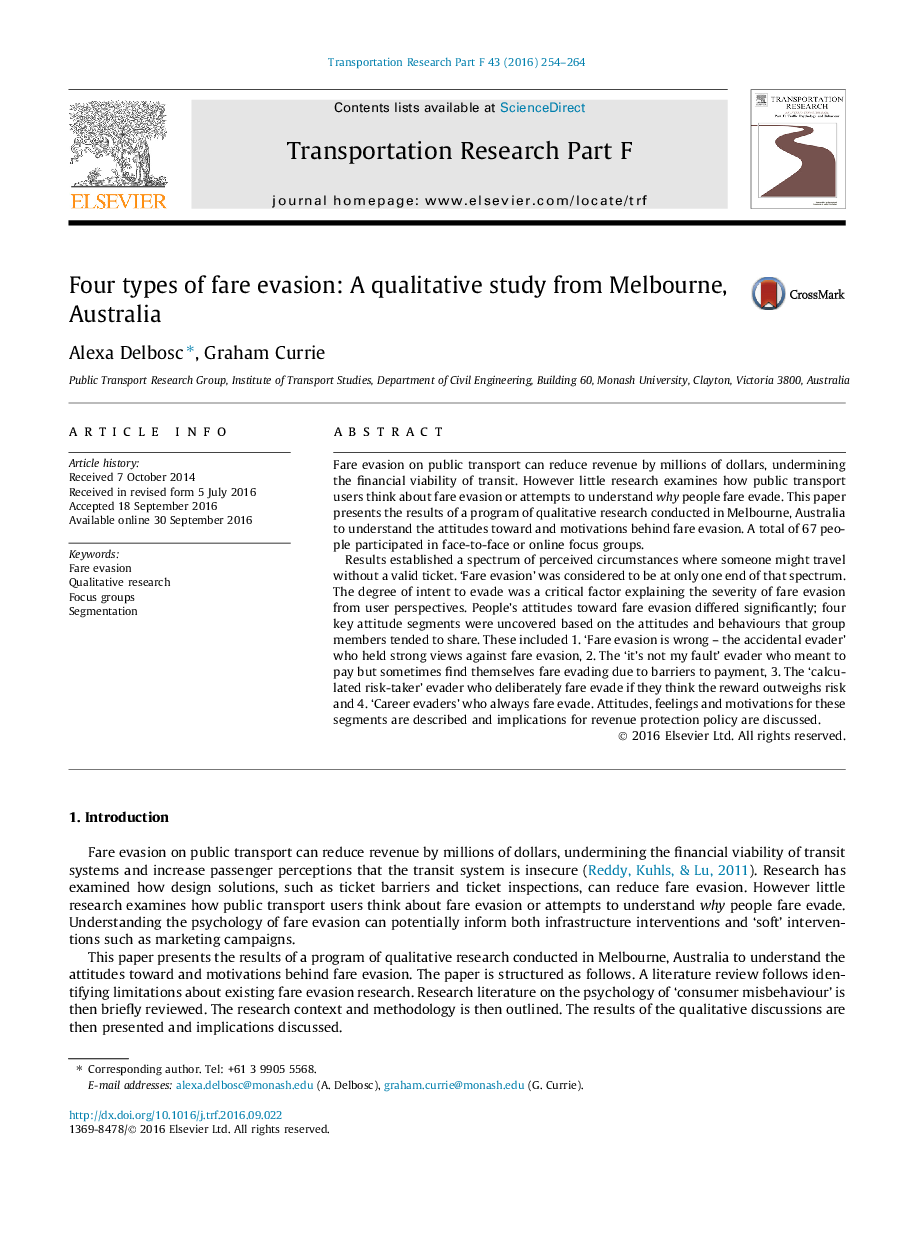| کد مقاله | کد نشریه | سال انتشار | مقاله انگلیسی | نسخه تمام متن |
|---|---|---|---|---|
| 5037488 | 1472442 | 2016 | 11 صفحه PDF | دانلود رایگان |
- Attitudes and behaviours around fare evasion vary significantly.
- Fare evasion can be classified into four attitudinal/behavioural segments.
- Fare evasion is a spectrum of behaviours based on the degree of intent.
- Segments are likely to react very differently to different enforcement strategies.
Fare evasion on public transport can reduce revenue by millions of dollars, undermining the financial viability of transit. However little research examines how public transport users think about fare evasion or attempts to understand why people fare evade. This paper presents the results of a program of qualitative research conducted in Melbourne, Australia to understand the attitudes toward and motivations behind fare evasion. A total of 67 people participated in face-to-face or online focus groups.Results established a spectrum of perceived circumstances where someone might travel without a valid ticket. 'Fare evasion' was considered to be at only one end of that spectrum. The degree of intent to evade was a critical factor explaining the severity of fare evasion from user perspectives. People's attitudes toward fare evasion differed significantly; four key attitude segments were uncovered based on the attitudes and behaviours that group members tended to share. These included 1. 'Fare evasion is wrong - the accidental evader' who held strong views against fare evasion, 2. The 'it's not my fault' evader who meant to pay but sometimes find themselves fare evading due to barriers to payment, 3. The 'calculated risk-taker' evader who deliberately fare evade if they think the reward outweighs risk and 4. 'Career evaders' who always fare evade. Attitudes, feelings and motivations for these segments are described and implications for revenue protection policy are discussed.
130
Journal: Transportation Research Part F: Traffic Psychology and Behaviour - Volume 43, November 2016, Pages 254-264
